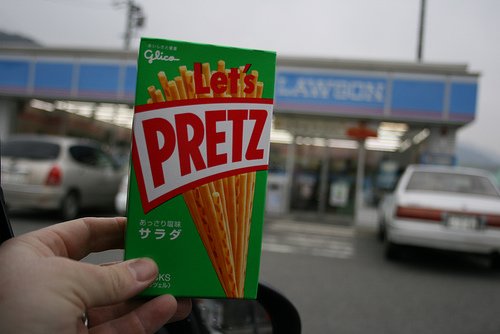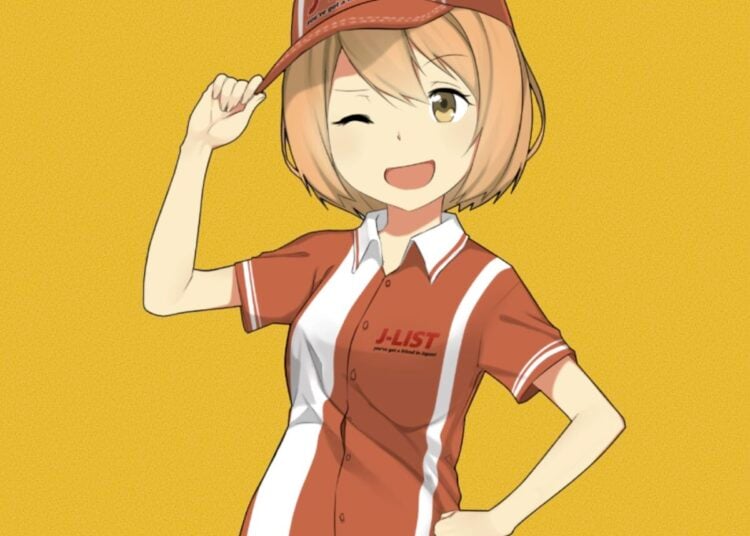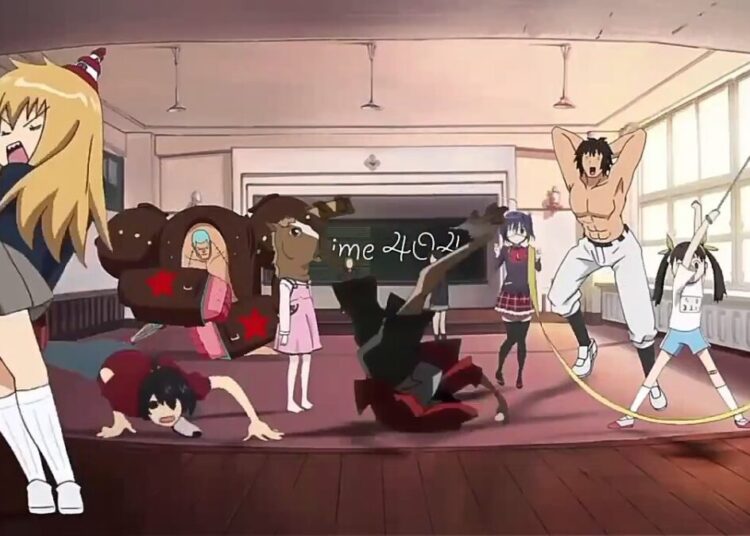I got a reminder that Japan is very much a part of the Pacific Ring of Fire yesterday when a 6.9 quake woke me up and gave me a good shake. At the time I was staying at our “mansion” (apartment) at the foot of Mt. Asama, one of the most potentially active volcanoes in Japan, and I quickly looked out the window to make sure the mountain hadn’t decided to go all Mordor on us. Aside from jittery nerves, there was no damage where I was, although plenty of older homes collapsed close to the epicenter, and one poor woman was killed by a falling stone lantern, a very “zen” way to go, I guess. Learning to not jump at every little earthquake is all part of living in a place like Japan, and it goes hand-in-hand with developing a taste for seafood and tofu, learning to never pour your own beer, getting used to wearing slippers that are three sizes too small, and being at peace with confined spaces that would make a Space Shuttle astronaut claustrophobic.

Over the weekend a friend and I went on the ultimate geeked-out road trip, traveling to Lake Kizaki in Nagano Prefecture, the setting for the two moe (mo-EH) anime series Please, Teacher! and Please, Twins! The first series is about a beautiful Pocky-eating alien who secretly marries one of the students at the local school, and the sequel is a dramatic love triangle between a boy and two girls that’s complicated by the fact that one of the girls is the boy’s long-lost twin sister, but none of them is sure which it is. (Twins is the better series if you have to pick just one — besides being a really good story, it’s got the best fan service ever seen. Wow, looks like it’s all up on YouTube if you’re curious and can stand the English dubbing.) Just about everything seen in the two shows is based on real places in the Lake Kizaki area, and otaku from all around Japan and the world make pilgrimages there, visiting their favorite landmarks and eating Pocky and Pretz, the two signature snacks from the shows. My wife snorted when she heard what we had planned, but no self-respecting Japanese female planning a trip to Europe would miss the chance to visit the Palace of Versailles to see the grandeur first introduced to them in the famous Rose of Versailles anime, or re-enact their favorite scenes from Roman Holiday in beautiful Rome, and my wife’s been to both several times.
One aspect of running a business in Japan is developing language skills that I might otherwise never pick up. In addition to needing to be able to read “legalese” for signing licensing contracts and what not, I’ve had to learn the basic mechanics of accounting in Japanese, which is difficult since I don’t understand it in English. As a general rule, legal institutions that work in the U.S. are also present in Japan, and if you have a concept in one country it will probably translate into something similar on the other end. Part of this comes from countries following the Generally Accepted Accounting Principles so that their laws can interoperate, but a lot of Japan’s lock-step movement with the U.S. comes from a deeper tradition of generally following behind us in all things — for example, Japan’s version of our 401(k) is ingeniously named the “Japan 401(k).” I recently found one concept that exists in Japan which is quite different from the States. It’s called gensen choshu and it means withholding income at the source, which is what happens when you get your paycheck with tax already taken out, but in Japan, taxes are pre- deducted in a wider range of situations. If we were to hire a programmer to do some work for us, we’re required by law to pre-deduct his taxes when we pay him, hence for a $1000 job we’d pay him $850 and send the rest to the Tax Ministry in his name, presumably to keep the payment from going unreported. This is a minor inconvenience, but I was surprised to learn that investment income is also pre-deducted in the same way. So when my wife puts money in a CD at 1% interest (still considered a fairly good return in the bizarro world that is Japan), she actually only gets .85% from it, which means she’s potentially losing up to a year of earnable interest on other investments she might make that year. I’m sure taxpayers would rise up and revolt over something like this in most countries, but sadly the Japanese mantra of sho ga nai (“it can’t be helped”) keeps people from demanding change.
J-List is proud to carry the Canon Wordtank, the electronic dictionary for serious students which I used myself for many years. Japan is a country that takes studying seriously, and the Wordtank is loaded with useful features to make learning a foreign language easy. Unlike virtually every other manufacturer, Canon’s Wordtank line goes out of its way to be friendly to gaijin, with features like an English menu mode, the ability to look up single or groups of kanji on the screen (useful because it’s common for a word you look up to be written with kanji students can’t yet read), an English manual, and of course the ability to save words and kanji for later study. I also like the feature that shows you how to write kanji by animating the stroke order — very handy. Just because the Wordtank is small doesn’t mean it lacks brains — inside its memory you can find 11 complete dictionaries. We’ve restocked the popular Wordtank G55 on the site now, ready for your immediate order!















